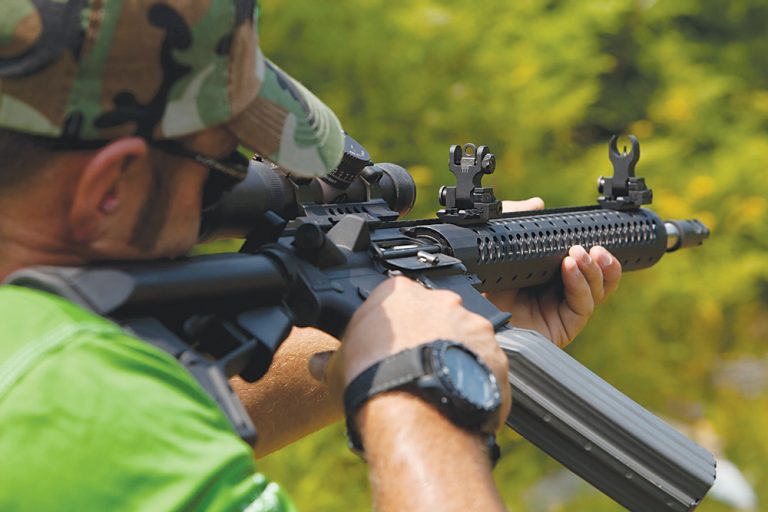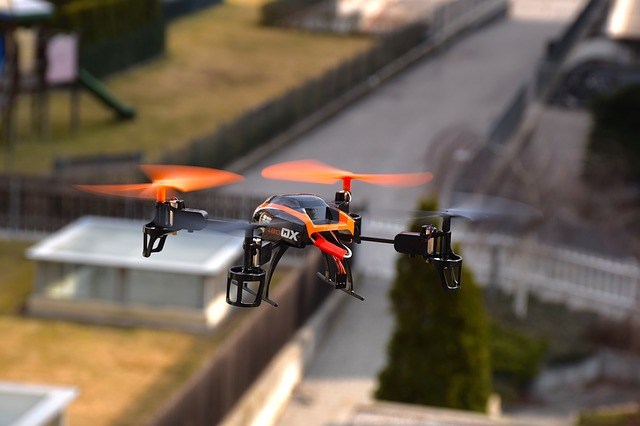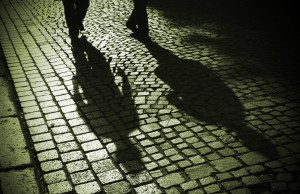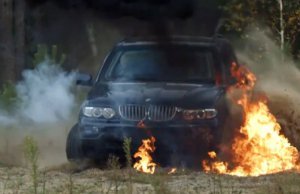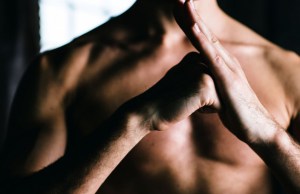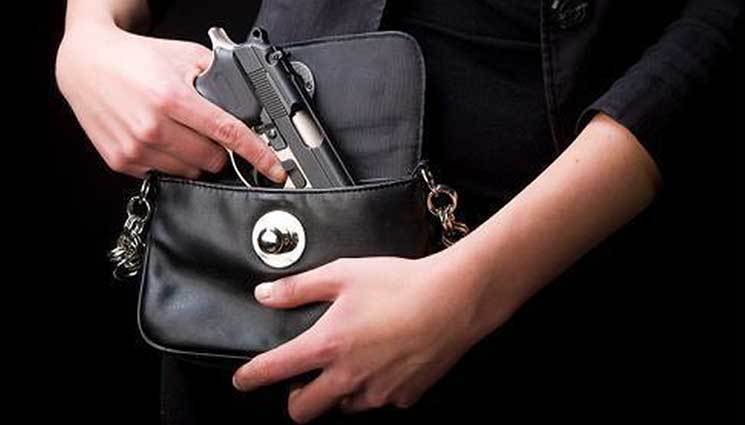
Numerous factors must be just right in order for concealed carry to work well, and concealment can change daily depending on our clothes and activities. Gun size, on-body carry position, holster angle, and ride height are all things to consider, and just one problematic factor can be frustrating enough to discourage us from carrying. Since our bodies and gun preferences are all different, the CC method that works best for one person may not work for another; therefore, the more perspectives we can get from individuals similar to ourselves, the better.
As a petite 5-foot-4-inch female of 118 lbs who carries a gun everywhere she goes, I’ll be the first to admit that concealed carry can still be a headache on certain days, resulting in a pile of clothes, guns, and holsters. In addition, a lazy week and a change in eating habits can (and will) make my pants fit a bit more snugly than usual. What woman really wants to squeeze a gun anywhere inside her pants when they are feeling tight already?
Women’s clothes are often fitted to accentuate our curvy figures, and our miniscule pockets are only capable of holding dainty things. Most of us just want to wear what we want to wear, without making getting dressed another chore to add to the daily list. Thankfully, there are many holster options available today, even for petite women, because I sure wouldn’t carry a gun on my body daily if it were not both comfortable and concealable.

Women definitely have an advantage with ankle holsters since they are very easy to access when wearing long skirts and dresses. One with both a calf strap and soft inner padding, such as this Galco Ankle Lite, provides both comfort and stability.
Along with the high number of holster options available for us to choose from, there are also a lot of places to position them around our bodies. INside-the-waistband (IWB), OUTside-the-waistband (OWB), shoulder, ankle, bra, pocket, thigh, appendix, and purse carry are the main CC methods that come to mind. Once you figure out where you can actually conceal on your body, then there are more choices to pick from. Leather, Kydex, hybrid leather/Kydex, and fabric holsters all vary in terms of comfort and retention. Numerous holster choices may be overwhelming, but there is no doubt in my mind that something will work for every licensed woman who wishes to conceal carry, if she is willing to spend some time going through her options and is truly determined to carry her gun on-body.
First things first, I recommend you decide which gun you most want to carry with you on a regular basis, and then try to make concealment work on your body with that gun. If you are unable to find a method of concealment (holster and body position) that works for that particular gun, then switching to a smaller gun can definitely help. A tiny .380 might conceal the best for all of us, but perhaps you’d actually prefer a slightly bigger (but still small) gun like a 9mm Glock 26 or a Ruger LC9. Gun selection is truly a matter of individual preference, and although very small guns conceal the best on my petite frame, other guns can conceal well too, depending on the season.
In the summer, I can only really conceal a .380 or a NAA mini .22 revolver on my body. In the winter, however, any gun can be concealed underneath heavy clothing. I’d prefer to carry my double-stack S&W M&P compact 9mm year-round, but with my small body size, I just can’t conceal it well enough with normal summer outfits. I’m not going to stop wearing shorts and tank tops in 90 degree weather in order to conceal my biggest gun, so I simply downsize to the smaller Ruger LCP or Kel-Tec P-3AT during those months.

Thigh holsters, like one from Clament Custom Leather, can work well for smaller women with lightweight guns, when worn under loose, knee-length skirts and dresses. When angled out the backside of the leg, they are less likely to rub when walking.
Once the weather starts cooling off, cover garments become much easier to incorporate back into daily wear, and it becomes a pleasure to carry the M&P again. Sweatshirts, jackets, vests, and sweaters are all excellent concealed carry helpers for those times of year when the temperature drops a bit. Even lightweight, sleeveless vests can be very helpful for concealment during the summer, although I’ve found darker colors to always conceal better than lighter ones.
I didn’t want to drastically alter my wardrobe to start carrying a gun, but being a new CC licensee was a great excuse to peruse eBay, thrift shops, and the mall, since I didn’t own many sleeveless vests or cover garments at the time. I wasn’t going to buy anything that I wouldn’t normally wear, so shopping for CC clothing was my own form of research. I asked myself, “What types of cover pieces could you add to your closet that you would still wear, even if you weren’t carrying a gun?”
Although I didn’t set out to change my clothing style, I will admit that finding a few select pieces sure did help with my concealment efforts. Having a few sleeveless vests in your wardrobe can make a huge difference, and shopping for new cover garments can be a true highlight of concealed carry. If you start out struggling with the concealment of your firearm, I highly recommend doing some shopping research of your own and not giving up until you find a few cover-ups that you’d be excited to wear any day of the week.

A long cover-garment is essential for OWB concealment, since you must cover both the gun and the holster. Concealing a mid-sized gun like this compact S&W M&P in an OWB holster can be hard for a petite woman, so switching to an IWB holster and/or a smaller gun can help.
Also, if you are like me and normally wear tighter pants that don’t allow for much wiggle room, definitely consider buying a few pairs that are one size up from what you normally wear, so that you can better experiment with IWB carry. I didn’t give into that for the longest time, but I’m so glad that I finally have because IWB holsters have become much more comfortable for me.
If you are going to spend the money on a concealed carry handgun, definitely consider CC clothing to be an investment to the cause—you may no longer have to leave your gun at home! You may even come to find that when you’re out shopping in the future, garments that are beneficial for concealed carry really jump out at you. Don’t forget that the ability to wear unique, feminine cover garments is one fun luxury of being a woman.
For my very first concealed carry gun, I chose a simple, lightweight revolver: the Ruger LCR. I experimented with all different types of holsters for that one gun, and of course I kept hitting walls. Some of my pants lacked belt loops, which ruled out all belt holsters. Others were very tight at the ankles, which ruled out any ankle carry. All dresses and most skirts did not work with a belt holster, and all of my pants pockets were too small for any gun. If you really want to carry your gun, however, persistence pays off. I have learned that on my body, with the types of fitted clothing I usually wear, different outfits work better with different types of holsters.
My wide-leg pants or long, floor-length skirts and dresses always favor an ankle holster, especially when they don’t have belt loops or the fit is too snug to accommodate a gun in the waistband. Knee-length skirts and dresses often work well with a thigh holster, as long as the gun being carried is small and lightweight. I have found, however, that skirts made of stiff, heavy fabrics can make drawing from the thigh holster more difficult, and skirts worn above the knee are often too short for a thigh holster to conceal adequately.

Jean skirts often have belt loops, which means ‘belted IWB holsters’ can still be worn in the summer. For a woman who carries a small 380, an adjustable IWB holster, like this Crossbreed Minituck, may conceal very well underneath a loose tank top or T-shirts.
Instead of thigh carry for those skirts, an IWB holster can work much better. Depending on whether or not the skirt has belt loops, I use either a Crossbreed MiniTuck or a clip-less Remora holster, positioned low in the waistband for best concealment. Not only is an IWB holster my CC method of choice with shorter skirts, but it is also my main choice for shorts, pants or jeans, paired with a regular T-shirt, hooded sweatshirt, vest, or cover garment.
A gun can also be concealed outside the waistband if you are wearing a longer, heavier sweater or jacket, although OWB holsters are bulkier in general, making them harder to conceal. Very specific cover pieces, like a roomy winter coat or a dark colored vest, can work especially well for most CC methods, including OWB, shoulder, and pocket. However, since concealable clothing options for smaller women can be limited with both shoulder and pocket holsters, I still carry either IWB or OWB in the winter.
Sometimes a woman, petite or not, has no other option but to carry her gun in a purse or bag. For those occasions, it is beneficial to have a dedicated gun purse, with a separate compartment for your gun. As a fail-safe option for when I’m either running out the door or heading on a more adventurous trek, I conveniently holster my gun inside a Gun Tote’n Mamas shoulder pouch or a Disse Gear concealed carry bag. I’ve also recently discovered a unique, new bra-style holster called the “Flashbang” which is made for various small guns. It may work well with most female clothing, aside from dresses and sports bras, although I still have yet to try it.

A straight drop (neutral cant), as shown with this Crossbreed SnapSlide OWB, is meant to be worn directly on your side in the 3:00 or 9:00 position. This angle is great for the range, although it doesn’t conceal well on a petite woman. (bottom) A slight forward rake, or even a more “extreme” forward rake, as seen on this Lobo Gun Leather OWB, can conceal very well for a petite woman in the 4:00 position. This angle helps keep the grip of the gun from poking through a cover garment.
Most of the time, I truly prefer IWB carry, and the sweet spot on my small frame is always the 4 o’clock position, directly behind my strong-side (right) hip. If I so much as even think about small of the back or appendix carry with my slim build, however, lo and behold, quite the bulge appears! For some women, those positions might work, so don’t rule them out until you try them yourself. They just don’t conceal well with my particular physique.
I like to wear shorter tops and cover garments too, so the main highlight for me with an IWB holster is that you only have to conceal the gun and holster above your pant line, since most of the gun and holster is already concealed within your pants. With an OWB holster, however, you have to wear a longer shirt or cover-up, since you must cover not only the entire gun, but the entire holster as well.
With any IWB holster, both the ride height (depth of the holster and gun in your pants) and cant (degree angle or “rake” your gun is tilted at) will make or break your IWB concealment attempts. The Crossbreed SuperTuck was my first IWB holster, and I’m so glad it was because that specific holster is adjustable for both ride height and cant. An adjustable holster is beneficial, especially for those starting out, so you can figure out exactly how you need to position a holster on your own body for it to conceal.
For me, a lower ride height conceals best, since I often wear fitted tops. Also, a more extreme forward cant works the best for me, since that angle is least likely to allow the butt of a gun to stick out the back of my shirt.

Many skirts lack the belt loops needed for waistband holsters, while others are too short for thigh holsters. A “clip-less” IWB holster with a tacky exterior surface, like this Remora No-Clip IWB, is a good option for a skirt that fits snug.
The versatility that different holster options provide is terrific and no single holster will work for all applications. With that being said, I’ve also come to believe that it is worth making small compromises in our wardrobe in order to carry a gun in the same position on most days. Since it is not a good idea to frequently switch your on-body carry location from day to day, picking a main style of clothing and preferred carry method is beneficial. If you wear a lot of long skirts, an ankle holster might be perfect for most days. If you prefer a lot of baggy hooded sweatshirts and T-shirts, an IWB holster might be the main way to go.
The problem is, if you constantly switch where you wear your holster, it may not be where you attempt to retrieve it from should you ever have to use it. It would be detrimental to forget where you are wearing your holster on the day that you need your gun, and you surely don’t ever want to fumble with getting it out. If you pick one or two carry methods for wearing your gun most of the time, then it will be easier to fit in plenty of crucial drawing and shooting practice at the range.
I am so grateful for the right to carry a concealed firearm for protection, and as CC permit holders, we should all respect the responsibility that entails. No matter which carry methods you choose, it is most important to be comfortable with your firearm and know how to handle it safely.















